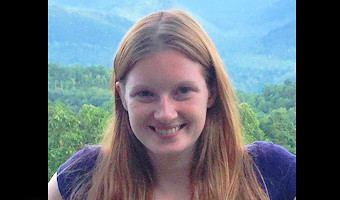The Condensed Matter & Surface Sciences Colloquium Series presents Beth McCormick of The Ohio State University on “Imaging Spin Dynamics in Monolayer WS2 by Time-Resolved Kerr Rotation Microscopy”, on Thursday, Nov. 30, at 4:10 p.m. in Walter 245.

Beth McCormick
Abstract: Transition metal dichalcogenide (TMD) monolayers are of great interest due to their two-dimensional (2D) nature combined with their unique band structure. The strong spin-orbit coupling due to the transition metal atom creates large spin splitting in the band structure, leading to spin/valley optical selection rules and long spin and valley lifetimes. In the tungsten compounds, WX2, optical excitation couples the upper level of the valence band to the upper level of the conduction band. This allows for the formation of “dark” excitons and trions (i.e. charged excitons), a lower energy state that cannot be optically excited or radiatively recombined.
We use time-resolved Kerr rotation microscopy (TRKR) and photoluminescence (PL) microscopy to elucidate the origin of the long spin and valley lifetimes in n-type monolayer WS2. We observe complex spatial dependences of spin and valley density varying on the micron length scale, with lifetimes exceeding 5 ns. Comparing spatial maps of PL microscopy with TRKR microscopy reveals that the neutral exciton PL intensity and the TRKR signal exhibit a correlation, which we attribute to resident conduction electrons. In addition, we discover an unexpected anticorrelation between trion PL and the TRKR signal, which is explained by the formation of spin/valley-polarized dark trions. We also find that the spin lifetime in WS2 is robust against external magnetic fields due to the stabilization provided by strong spin-orbit coupling, which is opposite the trend typically observed in materials, however a small component of the spin signal is discovered to precess. Finally, I will conclude with our recent exploration into spin diffusion and drift in WSe2.



















Comments